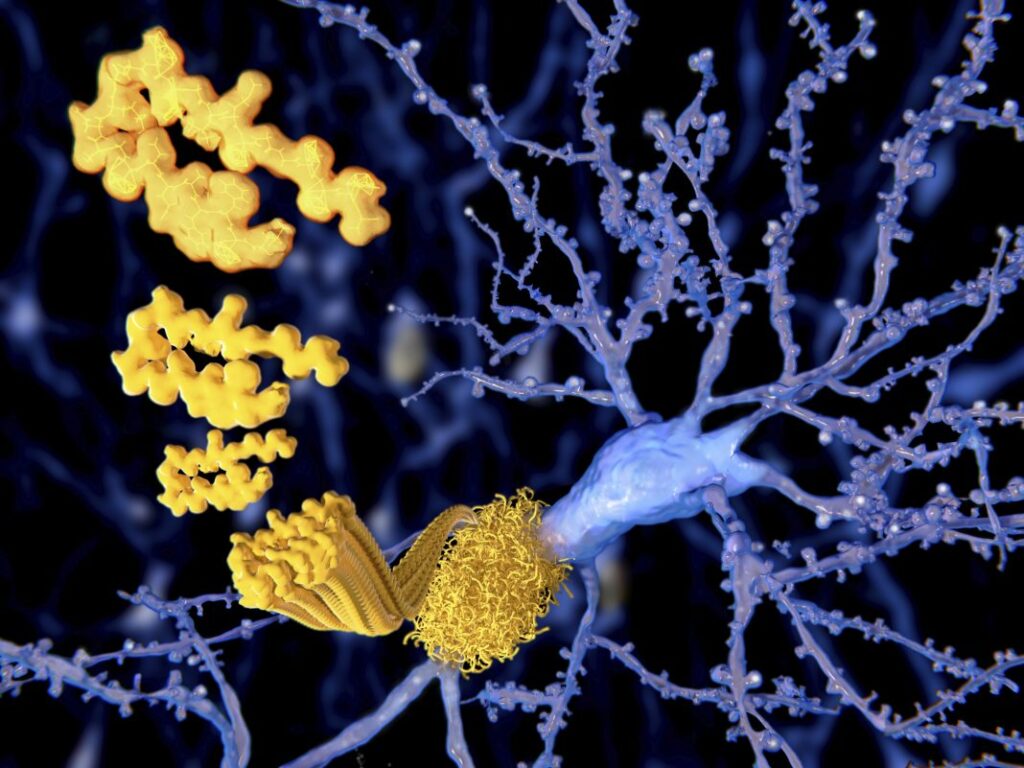In individuals with Alzheimer’s disease, a peptide known as amyloid-β accumulates and forms tangled plaques. People with diabetes have a higher probability of developing Alzheimer’s disease, raising the possibility of a link between the cells that are disordered in diabetes—pancreatic β cells—and the onset of Alzheimer’s disease. However, insulin supplementation may not halt the development of Alzheimer’s disease. Researchers at Hiroshima University and Sanyo-Onoda City University sought to explore the therapeutic potential of pancreatic β cells and uncovered these cells may secrete previously unrecognized neuroprotective factors, thereby reducing neuronal cell death in AD.
The findings are published in PNAS Nexus in an article titled, “Pancreatic β cell-secreted factor FGF23 attenuates Alzheimer’s disease-related amyloid β-induced neuronal death,” and led by Distinguished Researcher Toru Hosoi, Graduate School of Biomedical and Health Sciences, Hiroshima University.
“Alzheimer’s disease (AD) is a neurodegenerative disorder characterized by cognitive decline and memory impairment,” the researchers wrote. “The pathophysiology of AD may involve aggregated amyloid β (Aβ) accumulation, which may underlie the disease mechanism. Patients with diabetes exhibit an elevated risk of developing AD, indicating potential therapeutic implications upon elucidating the underlying mechanisms. We hypothesized that pancreatic β cell-secreted factors could protect neurons from Aβ-induced toxicity.”

The researchers hypothesized the existence of a neuroprotective agent secreted by pancreatic β cells, distinct from insulin, that could mitigate the onset of Alzheimer’s disease.
The authors cultured mouse pancreatic β cells, then exposed neuronal cells treated with amyloid-β to liquid from the pancreatic β cells. The liquid effectively stopped amyloid-β-induced neuronal cell death.
“In the present study, we established an in vitro model system termed the ‘neuron-pancreatic β cells model system’ to explore neuroprotective factors by examining the interplay between pancreatic β cells and neurons,” the researchers wrote. “Our findings demonstrate that the culture supernatant of Min6 cells, a model cell line for pancreatic β cells, shields PC12 neuronal cells from Aβ neurotoxicity. Additionally, the Min6 cell culture supernatant inhibits cell death induced by aggregated Aβ. Furthermore, we observed that this protective effect against Aβ toxicity is specific to pancreatic β cells.”
Their findings revealed that Fibroblast Growth Factor 23 (FGF23), an endocrine protein, is a novel neuroprotective factor capable of alleviating amyloid-β toxicity.
Treating neuronal cells subjected to amyloid-β with FGF23 alone significantly reduced cell death from amyloid-β toxicity. According to the authors, FGF23 may increase ribosomal proteins, helping to maintain the homeostasis of ribosomal components in neurons.


